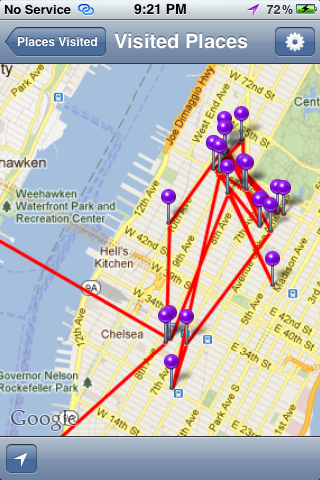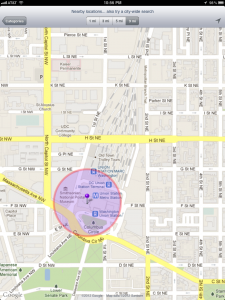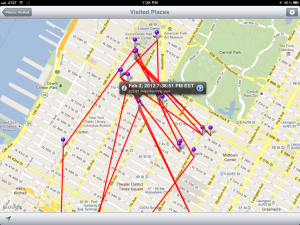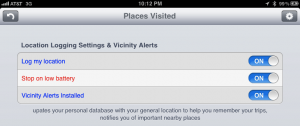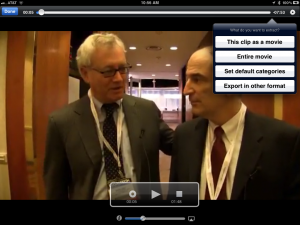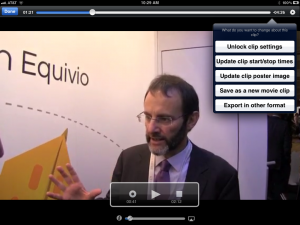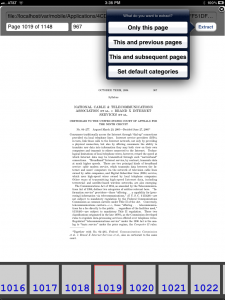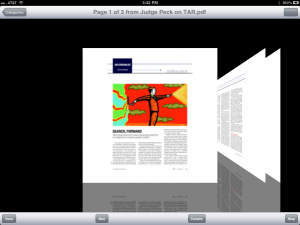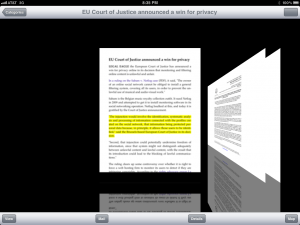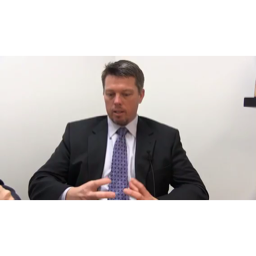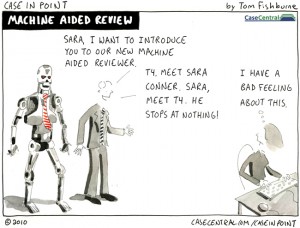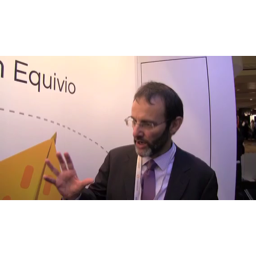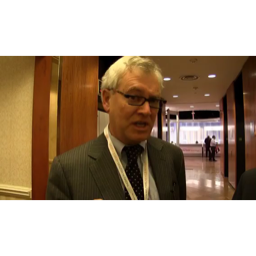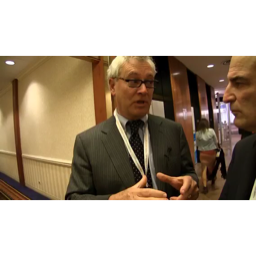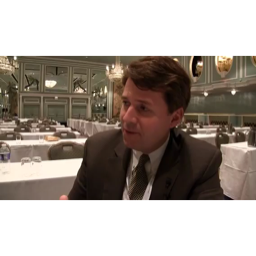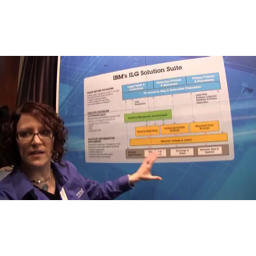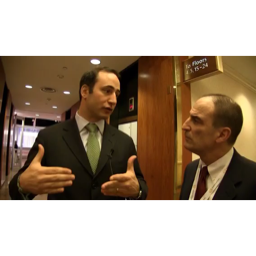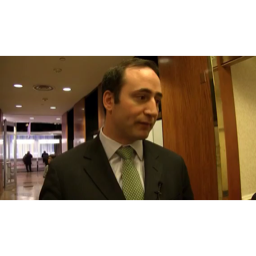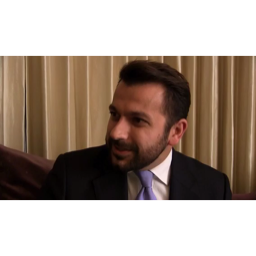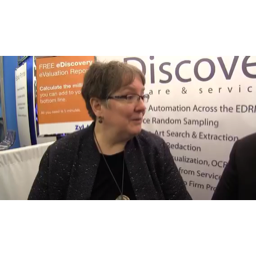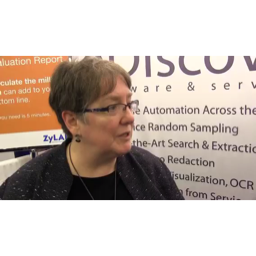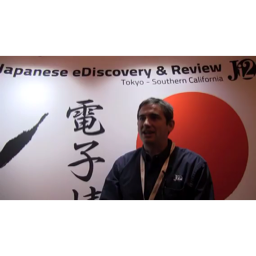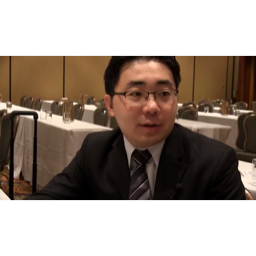By: Gregory P. Bufithis, Esq. Founder/CEO
24 February 2012 – I journeyed to LegalTech 2012 a few weeks ago from my home base in Belgium. This past year I have eschewed the usual e-discovery circuit. My Posse List and Project Counsel conference teams did attend various e-discovery conferences in the U.S. and Europe because it is good to keep up with the details of the industry — new document review dashboards, predictive coding, legal holds, preservation, data privacy, social media, “legal-not-talking-to-IT-and-visa-versa”, etc.
But I do make an exception for LegalTech because in one spot I can meet the vendors that our e-discovery review unit works with in Europe and Asia (we just opened an in-country document review center in China), as well as the several law firms we work with. And being a native New Yorker, it’s nice to come home now and again.
Information technology and information management has advanced to such a high degree these past two years, and I have become more involved with a private equity group making investments in information management technology, so I changed the priorities of how I cover these changes. I have learned more, I think, about e-discovery, information management, etc. from the ”Big Picture” high-tech events I have had the opportunity to attend this past year such as The 451 Group technology conferences, the IQPC and Gartner enterprise information management conferences plus the IBM/MIT innovation and technology conferences. Oh, and the stellar EMC “Big Data” conferences. Brilliant events. Lots of contacts.
Because as we all know, data is the new asset class on so many levels. As the Gartner Group, McKinsey and DealLogic have reported, venture capital and private equity firms have invested something like $5 billion last year in companies built around big data, information management, database management and data processing.
Side note: But that is all just a “junior partner” in the data world. The new “Big Think” is not machine data. The volume of data we’re generating now from machines pales in comparison to the volume of data we’ll soon generate (are generating) from our own bodies. My brain waves, my temperature, my pulse, my heart rate variability, my galvanic skin resistance, the number of steps I take, what I eat, what I breathe, who I talked to, my hormone levels, how happy I was, my brain’s efficiency at any time, and anything else I can think of stored in a very large, very secure, very friendly cloud analytics application. Shared anonymously with any researcher who is doing something cool. Or my physician. That’s the big vision. The new consumer-grade medtech offerings and other technologies already out there, and in development, are astounding. The human body is a blank slate. There is limitless data to gather about electrical, chemical, and physiological states, as well as about behavior and location. In every human body roughly ten trillion cells—brainless units of life—come together to work as a unified whole. And the data they spit out is enormous. Most analysts have tagged this as the “quantified self” movement (for some background information click here) and there was a great presentation by MIT just across town after LegalTech which I had the chance to attend with some IBMers and other LegalTech chums who stayed in NYC for the whole week. More on that further below in this post.
So my trip to LegalTech was keyed to several presentations being made to our private equity group by companies seeking funding, or who were just out right “on the block”. And although technology vendor suite reservations at The London and The Warwick and The Hilton were down from last year (ask the concierge desk or the bellhops for the scoop; they know everything going on at a hotel) that was probably off-set a bit by the army of VCs and PE folk and analysts who certainly increased in number this year.
But the REAL fun feature of my trip to LegalTech was to test a very cool app called The Mashup App which was developed by our chief technology advisor, Zaid Al-Timimi (http://TheMashupApp.com). The app (5 years in development and 3 years in beta) is now available on the Apple iTunes App Store (you can access the app by clicking here) is a vision for the future of the web: a web where we control our personal information and curate our digital data — from memories to knowledge– all from our personal device(s). Mine were the iPad and iPhone.
The Mashup App is built on a few very simple concepts:
- A personal database in which we save our digital data. We can save all types of data including web, PDF, images, video, audio, location, and time data. Since your personal database is on your device, you can save everything that is important to you – in this case, a log of every place I visited during my 3 days at LegalTech, and the 3 days after in NYC at client meetings. It is brilliant. Unlike a file name, we can describe the data using full sentences in multiple languages. This helps a person to remember their data. And unlike folders, we can aggregate — or mashup– the data into multiple categories. This allows us to create knowledge from the data by providing context and commentary. You will see what I mean in a minute. Since categories help organize related data, you can easily mashup web content with video or any other type of data saved in your database (I did a mashup of our video interviews, the accompanying PDF presentations, related articles, etc.). Furthermore, you can associate calendar events and address book contacts with data in your personal database providing seamless access to your data from your device’s built-in apps (I did a mashup of all my receipts for each day, at each location I visited, meetings I had… to each calendar event. This provided me with total recall).
- Once done, you can easily search your personal database even if it is very large and contains gigabytes of data. Unlike a key-word web search, you can search for your own descriptions of the data. And since you can store location and time data, you can search your personal database by time, location, and other related data. And unlike the web, you can sequentially browse your personal database so that you refresh your recollection of events, remember important data, and relive old memories (although I did delete all memory of that infamous Recommind party)
- After searching or browsing your personal database, you can see your results using 3D visualization, listen to it using text-to-speech, or use augmented reality to project the data onto your device’s camera or map.
- Best of all: we can share our data not only using email, Twitter, and SMS text messages but also with RSS feeds. For me, I had The Mashup App generate a report of my LegalTech coverage with a table of contents allowing me to write this blog post. Once we curated the raw video data, speaker content, and our conference notes, we created higher level “meta” categories based on topics and themes across all the speakers. We then exported these knowledge-bases in the form of self-contained databases and shared them with our whole team. Now, we have complete knowledge transfer of individual speaker content and our specific analysis, our aggregated analysis across all speakers at LegalTech 2012, and our “meta” analysis on industry themes, trends, and topics inclusive of LegalTech 2012 and all our public and private sources.
So let’s take a look at this app vis-à-vis my most excellent adventure at LegalTech (note: just click on any graphic to make it larger).
? LOCATION, TRACKING AND DAY-BY-DAY DIARY
I flew from Brussels to D.C. the weekend before LegalTech for staff meetings. So we start with the app’s Vicinity Alert which automatically displayed my train ticket information when I approached Washington DC’s Union Station, e-ticket at the ready.
Each pin represents a location I was near (based on GPS, cell tower triangulation or Wi-Fi base station location). To ensure the location logging does not drain the device’s battery, The Mashup App intelligently monitors battery and power usage. The tradeoff is that the location log will not be completely accurate and may require a few taps and drags to ensure better accuracy. (Sometimes you need to delete or “adjust” stray locations when you realize it placed you at a scandalous bar). Amazingly, I did not see any noticeable depletion of the battery level.
I am sure that many of you might be concerned with the logging of location data. Once you realize that The Mashup App only stores this information in your personal database which you can encrypt, you should be able to enjoy memorializing your trips.
From this I could generate a “diary” of my day, or my week and I could also associate any document — such as a PDF or a restaurant receipt or dry cleaning bill — I had to that “pin” location and/or day.
Suggestion: Get the app for your accountant. He or she will kiss you. Your whole trip, catalogued, in one place.
Another suggestion: Get an AirStash USB. It streams files via Wi-Fi to your iPads and other devices, without USB ports. It’s available on Amazon and costs about $150 for an 8 gigabyte model. Ok, pricy but it will increase the storage capacity of a base iPad by 50 percent.
And what was incredibly helpful was the ability to add location data to a picture, document, or video. Yes, I know. Most devices can automatically add location data when you take a picture with the built-in camera. But I was able to add location data to my photos and videos – it can be added to any item in your personal database — PDF, web, audio, and video content — to identify who I met, why, salient notes, etc.
? THE REALLY COOL PART: VIDEO MANAGEMENT AND INTEGRATED ANALYSIS
But the most thrilling part for me was the video mashup. Our video crews shot 50+ videos at LegalTech. I was able to load all of them onto my iPad and create categories containing all the videos as well as accompanying PDFs or other material of the folks we interviewed. I was then able to review, edit and clip from each video the appropriate piece to illustrate my LegalTech analysis (which you will see farther down below) via the interface:
Ralph Losey at LegalTech 2012
And to help you remember the context of the video clip, you can choose the most appropriate video frame and make it the poster image. The Mashup App handles all of the video’s time index details. And you can export in any format you require.
Warwick Sharp at LegalTech 2012
I cannot even begin to detail all this app can do in the photo and video regard but among one of its very cool features is the integration with the built-in Photo app which most people use to synchronize videos and photos from their computer or created with the device’s camera. I used The Mashup App to manage our video assets. Whether we used our professional cameras for the formal interviews or our iPhones and our Canon Vixia HFR20s swing cameras to capture a spontaneous moment, I knew that I could save the video content into my personal database and create my own video archive.
?
Because of this innovation, everyone in the legal profession can now manage and organize their case documents based on themes and topics rather than simple file and folder names.
And our Project Counsel teams, being multi-lingual, can now share their case analysis in their native languages even though the underlying source documents may be in a non-English language — an added function of The Mashup App.
You can also annotate time and location data to describe where and when a document was authored, signed, or destroyed. And The Mashup App manages the electronic page count and printed page numbers to minimize the differences between digital and printed PDF content and to foster content collaboration.
If you attended LegalTech, you know there were 20+ sessions and off-the-floor presentation dedicated to predictive coding and technical assisted review. I used the various functions in the app to mashup the predictive coding/technical assisted review presentations made by Deborah Baron, Maura Grossman, David Katz and Ralph Losey with the video interviews and then organize them into “meta” categories.
Meta categories allow me to group content at a higher level of abstraction. For example, I want to organize my analysis of the topics of predictive coding and TAR. So I created two meta categories: one for “predictive coding and TAR at LegalTech 2012” and another all inclusive “predictive coding and TAR” which includes other sources such as Judge Peck’s article on TAR from Law Technologies News October 2011 issue plus the myriad articles published on the subject by such sources as Metropolitan Corporate Counsel.
? ANNOTATING THE WEB
As The Mashup App has only been publicly available for a few months, it is missing a few features. One of those is the ability to highlight individual lines within a PDF page. Annotating web pages on the other hand is fully supported. I can highlight, delete, and format any part of a web page and then save it to my personal database. All of the images, fonts, and styles are saved with the page into my personal database so I don’t have to worry if the web page is taken down… pixel-for-pixel magic.
? And once you’re all done mashing up ….
And once you’re all done, you can share individual data items as well as categories of data via email and through web feed and report generation—and you can also share your personal database. Each personal database is implemented as a single file which makes sharing simple. I was able to distribute to all team members a complete, integrated, annotated file on LegalTech – videos, content, analysis.
Very cool stuff, indeed. Ok, it does take some practice. But you will find it is quite easy and you learn something new each time you use it. But we are all in a high-tech industry and most of us promote the grandeur of our tech ability, our tech products. So “cutting edge” is a piece of cake. And to get you started, we are giving out 50 copies of the app. You will find full details at the end of this post. But first, just a few comments on LegalTech.
LEGALTECH 2012 ? THOUGHTS AND TAKEAWAYS
? Technology! Oh, the places you’ll go! (apologies to Dr Seuss)
As noted at the beginning, I have spent the past year at the ”Big Picture” high-tech events such as The 451 Group conferences, the Gartner enterprise information management conferences and plus the IBM/MIT innovation and technology conferences.
This “industrial revolution of data” with vast amounts of digital information being created, stored and analyzed has given rise to a demand for tools and people that can both analyze and visualize the information. And my take-away from the past year’s events: we ain’t seen nuthin’ yet. My view is that the future of e-discovery and data management will involve such a development of information technology and corresponding uptake across the entire legal profession that such things as automated production of documents and intelligent e-discovery systems will become staggeringly more efficient. And less costly than even the lowest-paid lawyers.
The technology is faster, better, cheaper. And this strikes me as a logical life cycle of humans always striving to make our existence less and less laborious. And cheaper. The person who correctly figures out the next step in the cycle will surely be the big winner. But this is the great disruptor in the e-discovery market, especially the contract attorney sector. Not that physical jobs are disappearing into India. It is the technology, not India, driving the change.
And the drivers will be a mix of the “usual suspects” plus some up-and-comers. The future of ediscovery will be driven by companies like Autonomy (now owned by Hewlett-Packard), Digital Reasoning, EMC, IBM, Logik, and ZyLAB. These companies combine big data know-how with analytics expertise, seeking to make sense of massive amounts of historical and newly collected data for business operations, overall information management and e-discovery. We saw some of this software in action at LegalTech, two such programs on iPads. In general these are text analysis platforms and media analysis platforms (mobile phone data, photos, audio, etc.) that ingest large volumes of unstructured text/media data, identify the entities and relationships within it and then store the resulting data in its knowledge base as so-called “knowledge objects”. One can even create amazing Venn diagrams.
Side note: “Mobile First” – Those two presentations we saw on iPads. The future. One of the technology trends that can no longer be ignored is the rise of the Apple platform across all enterprises … a trend I wrote about in January (click here). In one of the conference sessions at this year’s LegalTech, the sentiment from the floor was that the Apple iPad was now the device of choice for attorneys. And we encountered e-discovery vendors who have developed a niche product line dealing with data collections from Apple products.
No surprise. It’s a “mobile first” world. As the folks from Forrester said at their presentation “companies need to realize that mobility is the new front end for engagement systems. Apps are increasingly context aware, fed by the cloud, sensors, history and social data. That requires companies to reconsider how they deploy apps for customers, partners … but especially employees around this enhanced form of engagement”. Bravo. Mobile apps from companies can’t just log data, they need to harness all the power of mobile and social to help people get specific jobs done in any particular industry. And so it will be for e-discovery applications based on the “industrial strength” presentations we saw. All you need to see is Microsoft’s purchase of Skype, Google’s acquisition of Motorola Mobility and Deloitte’s acquisiton of Ubermind to realize that technology’s next phase will be those firms that boast the most compelling ecosystems of devices and cloud-based services. And it also explains why so many e-discovery vendors last year attended the Mobile World Congress with more scheduled to attend this year.
Apple has had something of a head start in this race thanks to the visionary Mr Jobs, and they are clearly winning hearst and minds in the enterprise, but Amazon, Google and a host of other companies are now hard on its heels.
But as a software program grows in size and complexity, the software can become a cruel maze. As Jason Lanier has written when discussing large-scale software “it will feel like a labyrinth … even the best software development groups periodically find themselves caught in a swarm of bugs and design conundrums”. And let’s face it: much of the “high tech” e-discovery software we use day-to-day in review rooms is deficient despite the sales pitch at such venues as LegalTech. Last December in D.C., at a major law firm’s document review, we saw a “state-of-the-art” document review software “crash and burn” due to a myriad of tech failures … not scalable, suffering from “lock-in” (poor integration of different pieces of an enterprise software that do not function well together) coupled with poor supervision by the firm’s staff attorneys whereby the review was summarily dismissed while the law firm “rethought” its options. But we get reports on these tech burnouts on a regular basis via contract attorney membership who provide ongoing feedback on almost all the document review platforms.
And it will get more complicated as we move more and more toward unified information access platforms … let’s turn THAT into a LegalTech buzz word … which are platforms that integrate large volumes of unstructured, semi-structured, and structured information into a unified environment for processing, and analysis.

A typical unified information access platform
This is an area in which companies like EMC, IBM and ZyLAB excel. Especially IBM and its business analytics information software. These platforms are highly scalable, hybrid archtectures that combine elements of database and search technologies. And the data visualization features (not used in e-discovery so much but in business intelligence applications) are incredible. We had a chance to see IBM software in action about a year ago (click here).
It can all be a bit overwhelming for the average corporate client, even law firm. And there is often a disconnect, a feeling that there is a lack of transparency on the return of investment despite all that sizzle and new-fangled tech. We spoke to Scott Holec, co-founder and President of eTERA Consulting, about these issues. Here is a snip from that interview:
Note: we’ll have a full post next week on eTERA Consulting which will feature our full video interview with Scott.
? Cyborgs attack!! Predictive coding and technology assisted review
Predictive coding. Technology assisted review. Technology that is faster, better, cheaper. This strikes me as a logical life cycle of humans always striving to make our existence less and less laborious. And cheaper. The person who correctly figures out the next step in the cycle will surely be the big winner. But this is the great disruptor to the e-discovery market. We had a great conversation about this with Warwick Sharp of Equivio. Here is a clip from that interview:
There were 5,198 sessions dedicated to it at LegalTech (or so it seemed). The concepts behind it are not new, and actually quite familiar. Last year I had a chance to see the neuroscience and software architecture behind it and wrote a few notes (for that post click here).
The problem with all of this is that it resembles “Linsanity”. We have been pummeled with predictive coding and technology assisted review these last two years and with 21st-century attention spans that can grow weary of anything after two weeks, it can be mind-numbing. And with vendors battling over who invented what first, who has the patent, etc. it can resemble a combination of mud wrestling, roller derby and pillow fight.
The simplest analogy to explain it is just look at our regular life on the web. Algorithms will find correlations between the posts you open, the links you click and suggest purchases, or link to a romantic adventure, or suggested travel. In fact Ralph Losey, the preternatural oracle of e-discovery culture, makes this very analogy in his explanation of predictive coding and the science behind it:
And, he continues, the beauty of predictive coding is what it can do, and its contribution to trial preparation:
But Ralph emphasizes, there is still a role for the human eye:
But … there is always a but … are things going to change that much? Nobody has covered the whole area of predictive coding and technology assisted review (TAR) as well as The 451 Group. We had a chance to catch up with David Horrigan, an attorney and analyst for The 451 Group E-Discovery and Information Governance unit. He led a panel on the whole TAR area and provides some key take-aways … and a feeling that fundamentally things aren’t going to change all that much:
Note: full versions of all three interviews … David Horrigan, Ralph Losey, Warwick Sharp … will post next week when we publish “Where To Learn About Predictive Coding“. Vendors, law firms and e-discovery pundits have flooded us with source material and we’ll publish the above video interviews plus boatloads of and links. And to get you going here is a link to Ralph’s excellent series “Secrets of Search” (click here).
Data privacy. Dead? Well, kinda. But you might get fined.
In late November 2010, we attended in Paris (along with 300+ privacy professionals) the inaugural IAPP Europe Data Protection Congress. Yes, the event featured “thought-provoking discussion” and “engaging debate” on the European data protection community. But there was a feeling that the horse had escaped the barn, that in our Internet connected world any sense of privacy (data or otherwise) was gone. Viktor Mayer-Schönberger lectured us on “the virtue of being forgotten in the Digital Age” but in most cases it fell on deaf ears. And a Facebook representative … clearly caught off guard in the coffee line … stated what we all knew: “Well, we sell data. That’s what we do”. We know. We aren’t a customer of Facebook. We are a product.
And the analytical technology out there is certainly … well … revealing. At a RAS security conference last year, we were asked to participate in an experiment. Totally voluntary. At breakfast we wrote down our name and country of residence and handed it to a vendor. Not terribly private about it. That information was on the registration list. At one of the morning sessions a slide went up … showing our name, full address and where applicable an ID number: social security number, tax ID, driver’s licence, other confirmatory information, etc. Partially redacted, of course, so the full information was not revealed to the entire audience. Information searched via some very common, off-the-shelf software. Yes, it took some tweaking but the level of IT knowledge required was not that sophisticated.
I had written about this last year after Davos 2011 when I said we are moving/having moved towards a “Web of the world” in which mobile communications, social technologies and sensors are connecting people, the Internet and the physical world into one interconnected network. Data records are collected on who we are, who we know, where we are, where we have been and where we plan to go. Mining and analyzing this data give us the ability to understand and even predict where humans focus their attention opportunity will resemble a living entity and will require new ways of adapting and responding. All manner of firms collect and use this data to support individualized service-delivery business models that can be monetized. Simply put: data has become the new asset class. For that full post click here.
And let’s be brutally frank about privacy. Last week Google was being roasted for bypassing the privacy settings of those using Apple’s Safari Web browser, which unlike other major browsers blocks third-party cookies by default. Google, like just about every other online company, relies on cookie files to improve ad relevancy, to identify users, and to deliver online services.
But ask any IT person involved in the TMT (technology, media and telecommunications) sector and he/she will tell you that if you REALLY wanted privacy you would turn off JavaScript, block ads, and browse in privacy mode through an anonymous proxy. But we would rather not do that to have free services. We rely on free services like Gmail while insisting on “privacy,” a term that we probably can’t even define to our collective satisfaction. We accept terms of service contracts and privacy policies that explain in excessive detail how we will not get privacy, how our information will be used, and then we object.
So instead of privacy, let’s talk about control. You do have some of that, still. Make some choices about how your information will be used–because it will be used–instead of accepting default settings. If you object to the way Google does business, use ad-blocking software.
And let’s not even START on the gladiator competition in the TMT market and where it has taken privacy concerns. Last year I attended the GRC conference on antitrust, competition, technology and IP — a mashup of competition lawyers, TMT counsel and IT mavens, IP experts, analysts, etc. Brilliant stuff. I learned that in July 2011, when Apple released its new operating system Lion, it came with Safari 5.1 which included for the first time third-party cookie blocking by default. Could Apple’s decision to block third-party cookies by default have been influenced by its competition with Google, a company that depends on advertising and cookies? As John Battelle (a TMT pundit and guru who has written about Google for years) recently wrote “might it be possible that Apple is using data as its weapon, dressed up in the PR friendly clothing of “privacy protection’ for users?” No way! (To keep up on the nuts & bolts of the “IP Wars” … besides my brilliant posts on www.eamcap.com … I suggest you follow Florian Mueller at http://fosspatents.blogspot.com)
Making the rounds at LegalTech this year you could not help but notice that the new data analytic technologies have weakened the effectiveness and reliability of anonymization, one of the primary mechanisms available to litigants to navigate cross border discovery conflicts. It simply emphasized even more the Hobson’s Choice facing U.S. litigators: violate foreign law and expose themselves to enforcement proceedings that have included criminal prosecution, or choose noncompliance with a U.S. discovery order and risk U.S. sanctions ranging from monetary costs to adverse inference jury instructions to default judgments.
Chris Dale does a masterful job (you expected less from The Sage of Oxford?) in summarizing the key points and attitudes on cross-border discovery. For his post click here.
I suspect we’ll have some major “test case” on privacy in Europe and it will probably come from the raft of IP litigation across Europe, most of it in Germany. There’s not as much discovery as in the U.S. (we did 3 document reviews in Germany and based on Posse List/Project Counsel membership feedback there were 12 German-based reviews in total last year) but litigation there is comparatively inexpensive, the bench is highly sophisticated, damages are substantial and the process moves quickly. IP action is heating up all across the globe … Japan, Korea, China, Australia and Spain .. because there is this whole new level of intensity, and global players are looking for forums where they can put pressure on. At last year’s GRC conference which I referenced above, in-house counsel spoke about how they were stretched to understand how these different forums globally interrelate, in terms of speed and outcome … and all these EU data protection rules.
But just a few lines about social plug-ins, such as the popular Facebook ‘Like’ button, which got some attention on one of the LegalTech panels on privacy and with which we have been involved in Germany on one of our IP litigation reviews. It is a good example of the data privacy issues involved, and some of the regulatory issues facing litigants.
German data protection authorities have expressed their concern about the plug-ins non-compliance with German data protection and media laws. In the case of non-compliance, administrative fines of up to €50,000 may be imposed. But what especially ticked off the authorities in our case was the transfer of website users’ personal data to the U.S., pointing out that submitted personal data might be combined and used in the form of user profiles. In our case, that information was being used in a litigation in the U.S. whereas such information would not have been available for use in a German litigation. And all the litigants were German. Such collection, transfer and processing of users’ personal data via social plug-ins is contrary to German data protection and media laws. The German laws are quite explicit:
– there is no valid user consent based on the terms and conditions of Facebook and other social media
– a legally required notice on the right to object is not provided
– user consent (opt-in) must be obtained in order to install cookies on users’ browsers
No surprise here. There are already several German rulings that the implementation of Facebook’s ‘Like’ button may be problematic with respect to data protection law. It is comparable to the use of Google Analytics – a service that has been held as non-compliant with German data protection laws in the past.
According to several “techies” we chatted with at LegalTech there are work-arounds, such as an option for website providers to include the respective content as their own data and not as an iFrame in their websites. This would at least ensure that the mere loading of a website containing a social plug-in would not entail the transfer of personal data to the provider of the respective social media service.
But technical work-arounds are rife with issues, such as whether such a solution comply with the respective licenses granted by the social media service providers, and it still does not provide the data subject with the right to object (which would require technical modifications by the social media service itself).
Beyond my payscale to address. And it stands to get worse with this new EU data protection scheme as detailed in a thoughtful piece by this week by Catherine Dunn in Corporate Counsel (click here).
? GRC? Governance? Risk? Compliance? Governance + Risk + Compliance? No, just really risk and compliance. Oh, that thing. Whatever.
There was not a lot of direct session chat on the GRC front although there were a lot of vendors selling products to address it. Which was kind of strange because just on the finance side the global economic crisis created a wave of legislation designed to mitigate risk and protect the financial system from shocks, although as we have seen they are slowly succeeding in skirting many of the big issues (click here).
The surge in regulation across all industries and business models is driving people … well, nuts. Just taking the health sciences industry as another example, regulation and compliance are a way of life. It governs the entire product life-cycle – from compound development to clinical trials and approval; from raw ingredient procurement to packaging and tracking through the distribution channel; and more recently (in the U.S.) in documenting the amount of marketing dollars expended on individual healthcare providers.
In an increasingly regulated world, IT plays a crucial role in storing data, organizing that data, and ensuring compliance. Banks, pharmaceutical companies, and manufacturers and service industries across all lines are devoting a significant proportion of their IT budgets to compliance.
But to the rescue was the crackerjack team of KPMG to put things in a bit of perspective. And this was sort of a run-up to their just released “The Convergence Evolution”, subtitled “Global survey into the integration of governance, risk and compliance”. It makes an excellent case for convergence between risk, compliance and governance functions such as strategy and performance. For a copy click here.
I learned a ton of stuff at LegalTech from KPMG, such as:
*During the financial crisis, organizations were fearful about their longevity and the ramifications of non-compliance with regulatory demands. This environment led to a surge in risk and compliance activities that were costly and had an uncoordinated approach
*Before the financial crisis, 10 percent of respondents took risk and compliance extremely seriously. Today, this proportion has risen to about 40 percent.
*Although many COOs recognize the benefits of improved convergence, only 49 percent label it a priority for their organization. Most are still at a fairly early stage of maturity in their convergence activities.
*Many organizations continue to have a fragmented and overlapping approach to their GRC (sometimes only referred to as risk and compliance) obligations.
*Key tidbit: more than one-half of respondents surveyed by KPMG said it is difficult to know who has responsibility for specific functions, and it seems to be getting worse. Oh, dear. Call in the Venn diagram department!
*And the biggie: companies still have silos and fragmentation in risk and compliance functions, and KPMG was dying to tell me which ones but kind of fudged with “prominent organizations”.
But … but, but, but … KPMG agreed with me: not all companies and industries are clueless. Some are really out front and would very much disagree with the flood of webinars and presentations and their drumbeat of “the gap” between IT and legal in matters of e-discovery demands, be it litigation, regulatory compliance or internal investigations.
Project Counsel has had the benefit of working with companies that “get it”. Almost all of our clients are in the TMT (technology media telecommunications) industry where technology and information are the lifeblood of the business. Within these industries we know that IT, legal and information officers work together to manage, document, and streamline their regulatory compliance and litigation initiatives. We have seen remarkable performances (and technology) where businesses in these industries have unified IT infrastructure for analytics so it covers compliance and risk and performance management as well as e-discovery as a regular business process. As the general counsel of Samsung told us at a recent event “it is a matter of providing relevant and ‘actionable information’ and improving reporting capabilities across the entire enterprise and delivering detailed insight when required”. It is, as Gartner has reported in numerous studies, why chief information officers and legal officers and IT professionals in these industries have established a more wide-ranging approach to risk management and compliance and litigation.
We’ll have more later this year when our video crews visit Gartner to interview Deborah Logan, Doyenne Extraordinaire in these areas.
Which takes me to ….
? Information governance. E-Discovery. Together again. For the first time.
Funny thing information governance. Go to an e-discovery conference and information governance as a discipline is in its infancy. Go to an information governance conference and e-discovery is the tail trying to wag the dog. I am certainly not saying that organizations cannot apply the lessons learned from e-discovery to accelerate their path towards a sophisticated information governance framework. And as one panelist at LegalTech told me “we aim at the great unwashed and educate them. Most who come to LegalTech come for education, and are composed of folks across a pretty wide level of experience … but mostly inexperience as regards information governance”. Well said. I think.
I suppose I am fortunate, then, that most of my client base come from the TMT, financial services and pharmaceutical industries where a holistic approach to GRC is pretty much in place simply due to high level of regulatory issues they face, and a highly litigious marketplace. In-house counsel and compliance professionals have the knowledge of the interplay of those related disciplines. As the roles of the GC and CCO broaden and impact the strategic direction of the business, the importance of integrating GRC technologies has increased along with the value added of high-quality (but lower cost) attorneys to improve ROI.
There were scores of vendors selling products for the “information governance cycle” and it was tough to choose who to interview. But to get a nice overview of such topics as information lifecycle governance, content analytics and defensible disposal here is an insightful clip from Michelle Kersey of IBM’s Information Lifecycle Governance Solution (ILGS):
Note: next week we are off to the IBM Information Governance conference in Maryland so … more to come.
? New models of review and managed services
There has been a notable shift to what I’ll call a higher level of managed services, both from law firms and vendors. Not everybody. But a large number of ediscovery players (vendors, law firms and corporate clients) have developed a new “paradigm” (sorry; we hate that word, too) given the McDermott, Will & Emery malpractice case plus the technology advances in the market. It is the utilization of “data swat-teams” comprised of contract attorneys who possess the tech skills + the analysis ability with a greater emphasis on data search specialists who have the ability to conduct complex searches, analyze information and generate reports. Joe Kanka and the folks at eTERA Consulting have sort of pioneered of this approach and we’ll detail it next week in our special post about them.
But several law firms have also adopted the model. Here is Steve Berrent, managing director of WilmerHale Discovery Solutions, talking about the WilmerHale model:
And WilmerHale makes an investment in its people:
We’ll have the full interview with Steve shortly when we post more about this model.
Meanwhile, in London, a few vendors have made themselves a cut above the rest taking managed services to a new level. Most prominent among them: UNIFIED. And they’ve taken the model straight through from data collection and processing to review to production. Paul Mankoo, CEO of UNIFIED, explains:
? Ah, the cloud. The cloud.
You know something? This cloud thing? It just might catch on. Or as our buddy Alex Woodie has said “when terminology from the IT department breaks through into the mainstream culture, you know you’re onto something really hot”. This is the case with the term and the concept behind “cloud computing,” which has spread like a west Texas prairie fire. In fact we got so excited we devoted a whole website to it called The Cloud and Ediscovery where we try to keep you informed all cloud characteristics (storage, broad network access, resource pooling, rapid elasticity, etc.) and the infrastructure behind the cloud (data centres, IT environments, virtualization, etc.). We also post about the financial/investment aspects of the cloud, plus news briefs on cloud “gadgets”, etc. And we post about all aspects of “Big Data” and its visualization, and its contribution to new ways of understanding human patterns, new kinds of business intelligence.
To put it all in perspective, here is Steve D’Alencon, Chief Marketing Officer of CaseCentral, who puts predictive coding and technical assisted review in the context of cloud computing:
Steve went on to discuss what technologies CaseCentral has developed in this new cloud computing milieu:
And here is Mary Mack, Enterprise Technology Counsel for ZyLAB, putting cloud computing and e-discovery in perspective:
And Facebook? Well, it’s really a cloud platform:
Note: we’ll have the full interviews with Steve and Mary in an upcoming piece on “the ediscovery cloud” which we will post on our cloud site mentioned above.
? Asia and E-Discovery: coming of age
The surge of e-discovery work in Asia is due, no doubt, to the global shift of the industrial supply chain from West to East. Last year Ernst & Young published an excellent piece explaining this shift of supply officers, CIOs, etc. to the East … along with their servers. So that shift, coupled with the increasing expansion of Asian-based technology firms (and litigation) has led to “Elvis has not left the building”: the data collection and processing stays local. Singapore was the first Asian jurisdiction to specifically address the discovery of electronic material, after the American, U.K. and Australian courts have made various moves toward doing so.
One of the major players in the Japanese market is Ji2 and in this clip Chad Kime, Business Development Manager for Ji2, talks about Ji2’s operations in Japan and their attorney document review base:
And Ji2 works with numerous document management software companies:
But it is the Chinese side that is growing by leaps and bounds but with a twist: it is still 80% paper. We had a chance to chat with Beom Chin, Business Development Director for Data Management Corporation in Hong Kong, DMC, on that aspect as well as his thoughts on ediscovery in Asia:
Note: we’ll have the full interviews with Chad and Beom in two upcoming pieces: an overall look at Asian e-discovery, and a special post on e-discovery and litigation in China.
? A concluding note on IBM, Watson, Big Data and exponential technologies … plus The Mashup App Give Away
Last week we had a chance to attend FutureMed, a health-care program that is part of Singularity University, a networked organization dedicated to exploring how disruptive technologies can sweep across whole industries and society. The subject was the high-tech future of health care. The technologies on display were impressive, often inspiring — like the wearable-robots, or mechanical exoskeletons, made by Ekso Bionics, to enable people with spinal cord injuries to walk again; or IBM’s Watson question-answering computer that is being morphed into a doctors’ smart assistant. It is just a series of fast-changing technologies including biotechnology, nanotechnology, robotics, artificial intelligence — all due to the surge in analytics surrounding “Big Data”. Or as Dr. Daniel Kraft, executive director of the FutureMed program, said: “There are exponential technologies are all around us”.
Dr. Martin Kohn, chief medical scientist at IBM research, sketched out the future path in health care for the technology behind Watson, the computer that last year outwitted the best human players of Jeopardy! Quote that brought the crowd to tears of laughter: “You’ll not be surprised to learn that the executive leaders of IBM fairly quickly decided that playing Jeopardy! was not a long-term business model.”
It was at Text Analytics World last year where we saw two brilliant presentations by IBM. One was on their Watson project and the work they are doing on analyzing vast volumes through natural language processing (NLP), and information retrieval (IR) for applications in business intelligence, enterprise knowledge management, e-discovery, etc.. The second was on the algorithms at the heart of predictive analytics for NLP and IR (which they noted have been around for years) that are moving into the mainstream and how they are successfully applying it to all levels of analysis at the enterprise level: financial, legal and BI.
And at FutureMed it was more of the same (the core transferable technology) albeit at a higher level. Dr. Kohn explained that it was the artificial intelligence software that made it possible for Watson to read and understand 200 million digital pages, and deliver an answer within three seconds. In health care, Dr. Kohn said, “we are overwhelmed by information. And we’re only as good as what we know.” No, Watson is not going to make diagnoses (afterall, we have Dr House for that) but will make suggestions, recommendations and determine probabilities. The more information Watson is fed, Dr. Kohn said, the more it learns and understands, in its way.
And it’s “star” turn: medical complexity. Determining treatment regimens for patients with more than one chronic condition (such patients account for a large share of the nation’s health care costs). We have well-defined treatment guidelines for individual conditions like heart disease, diabetes, asthma and emphysema. But the guidelines are far less helpful for patients with more than one condition. For example, a beta-blocker drug is good for heart disease, but bad for asthma, Dr. Kohn noted. What are the trade-offs and what are the probabilities?
The key, the powerful tool that is Watson? making more decisions based on data and a surer grasp of the relevant scientific evidence — so-called evidence-based medicine — instead of experience and intuition. Brilliant technology and we’ll have more on it over at www.eamcap.com.
? The Mashup App give away
We are giving away 50 copies of The Mashup App which I profiled at the beginning of this post. I think it is a brilliant app and you will discovery how incredibly useful it can be. Zaid and I decided that we’ll choose the 50 from those that Retweet this post with the hashtag #TheMashupApp, plus those that email a request to media@projectcounsel.com. Social Media Operators are (virtually) standing by.
